Bishop Dunbar's Hospital on:
[Wikipedia]
[Google]
[Amazon]
Bishop Dunbar's Hospital was founded in 1531 by Bishop Gavin Dunbar, the Elder. The hospital was endowed by a mortification just before his death. Dunbar petitioned the King, 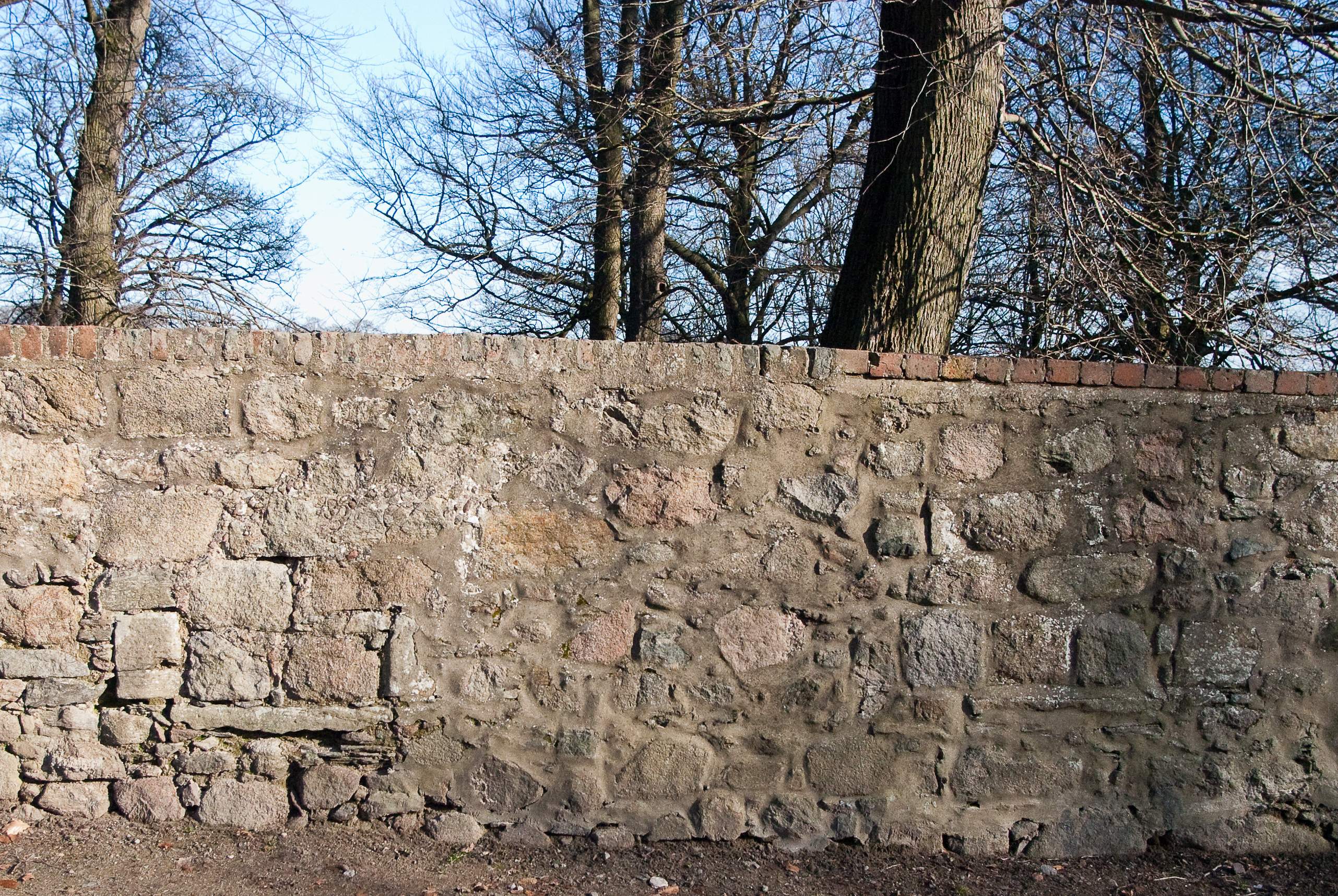

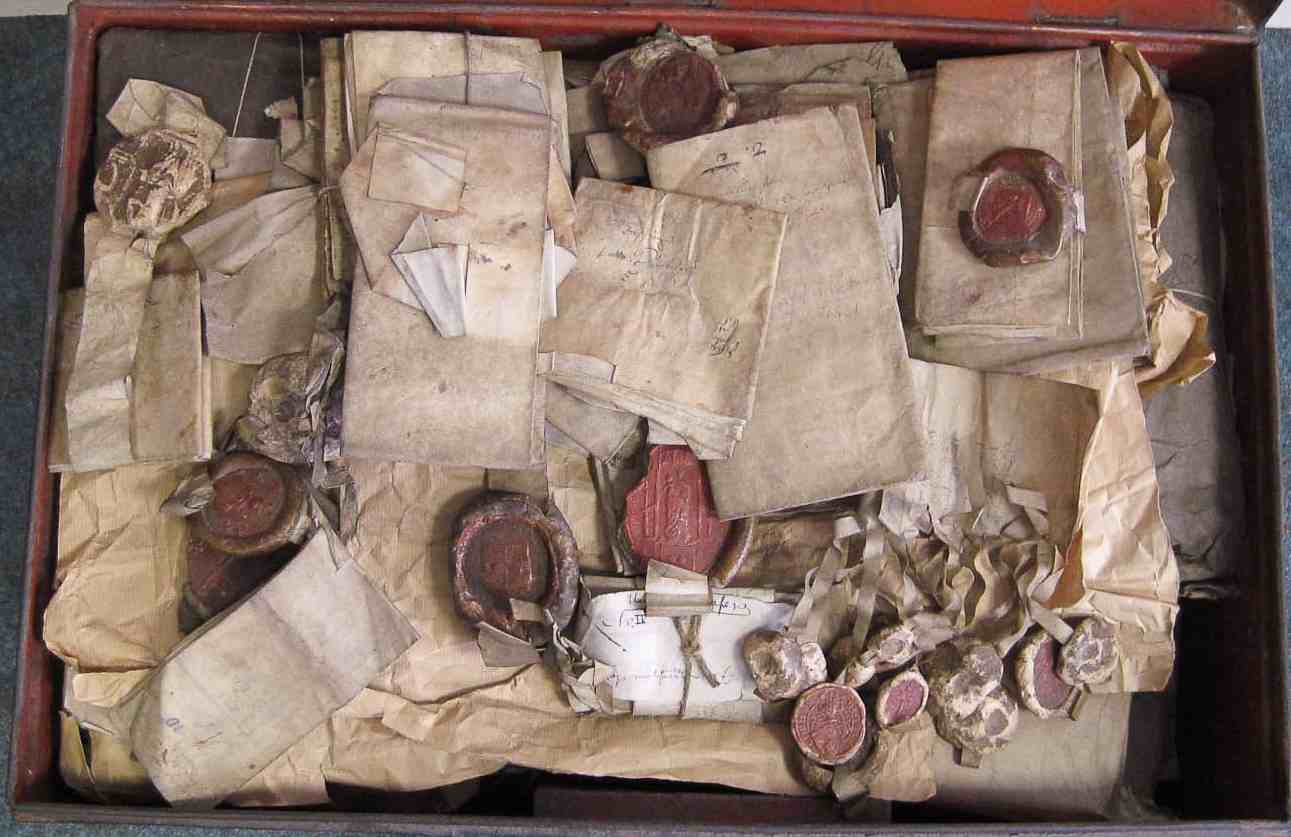 In this preface, Dunbar confirms his Christian practice of enacting "corporal works of mercy". However, this does not really explain fully why the hospital was built. Dunbar was a charitable man. It was common practice for the nobility to exercise care of their community. Some noblemen were more charitable than others. Perhaps it was because Dunbar was a Bishop? It is possible that there was a theological motive at work. The explanation is to be found in the name of the inhabitants, Bedesmen, and in the description of how they were to live – in care and prayer. The explanation draws on an often-misunderstood principle of Catholicism – a belief in Purgatory and prayers for the dead.
In this preface, Dunbar confirms his Christian practice of enacting "corporal works of mercy". However, this does not really explain fully why the hospital was built. Dunbar was a charitable man. It was common practice for the nobility to exercise care of their community. Some noblemen were more charitable than others. Perhaps it was because Dunbar was a Bishop? It is possible that there was a theological motive at work. The explanation is to be found in the name of the inhabitants, Bedesmen, and in the description of how they were to live – in care and prayer. The explanation draws on an often-misunderstood principle of Catholicism – a belief in Purgatory and prayers for the dead. 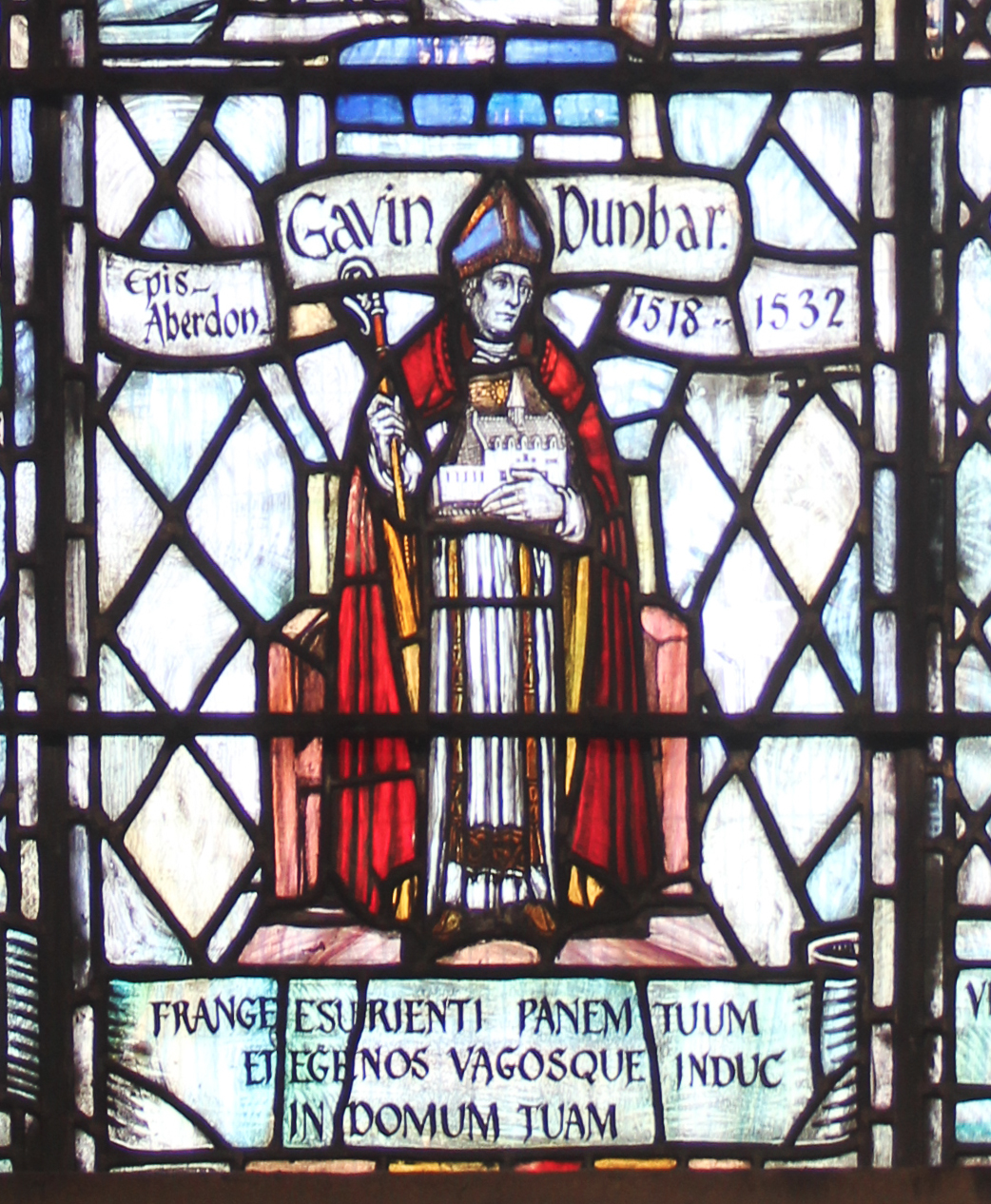


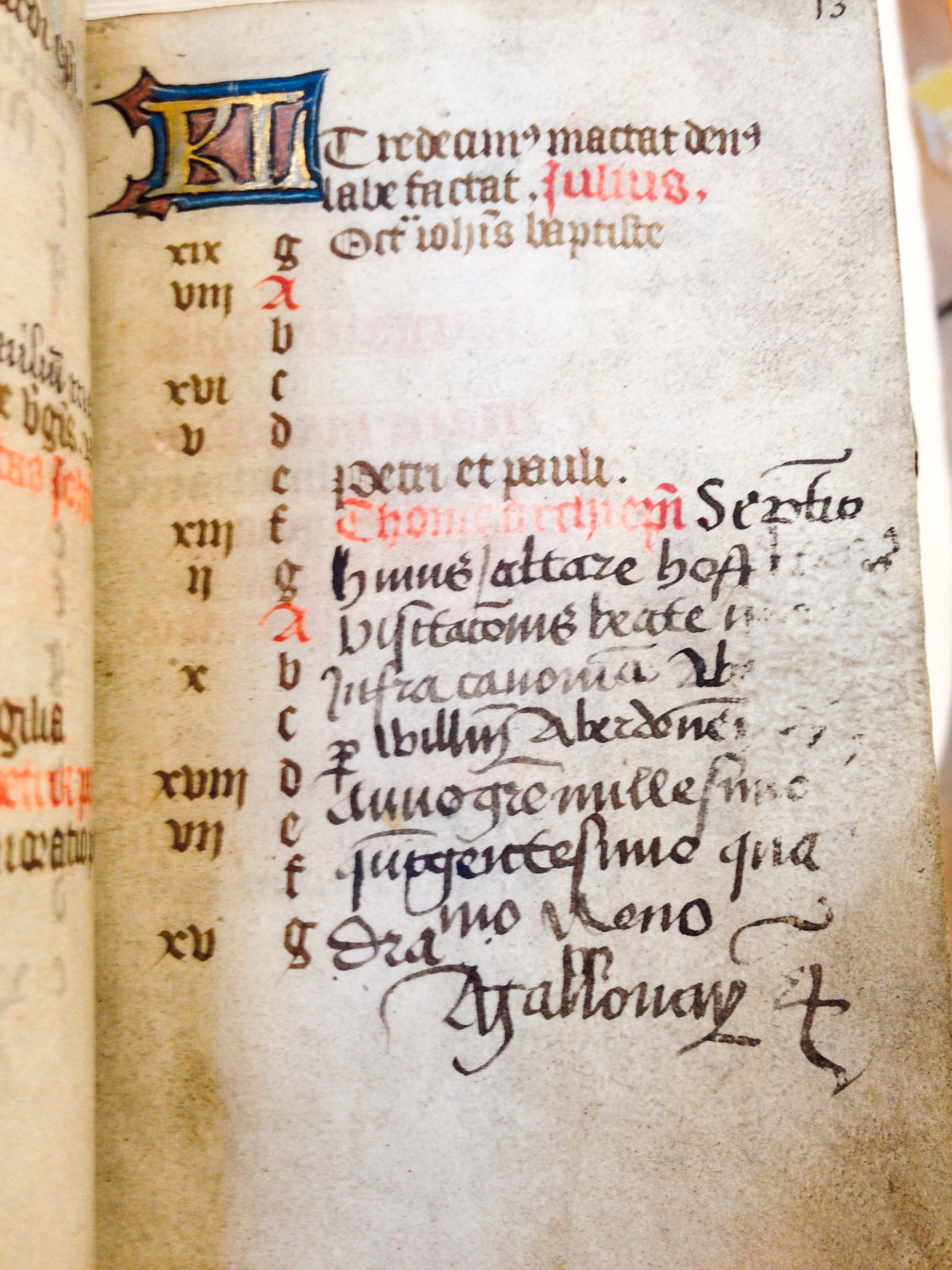
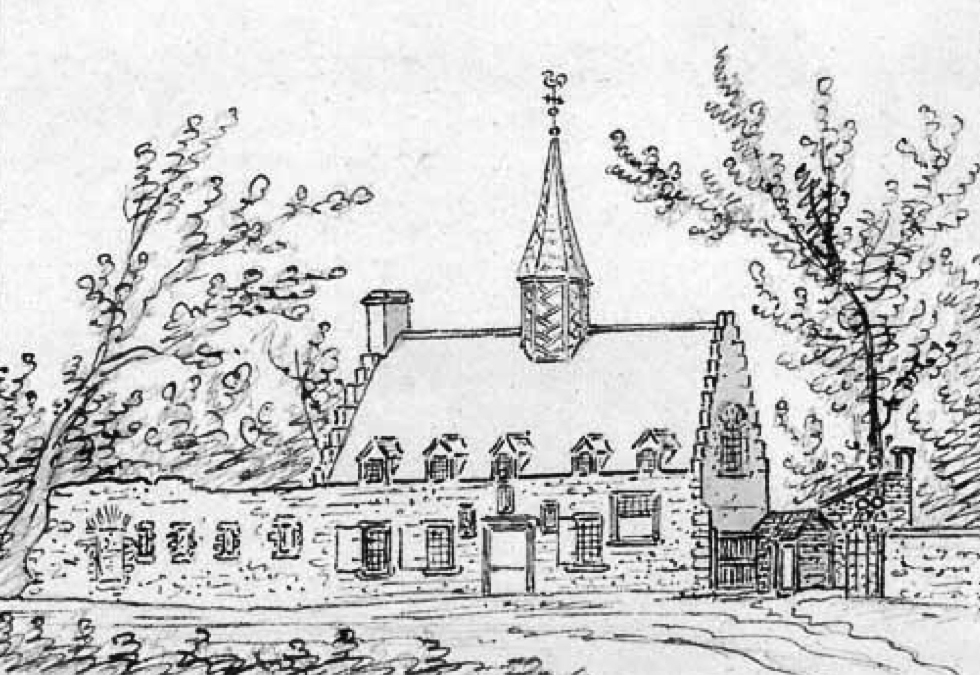 In about 1789, the original building was in a state of disrepair and the owner of the land adjacent to the Hospital and St Machar’s Cathedral Church, James Forbes-Seaton arranged for a house he owned in Seaton Gate (modern Don Street) to be used for the Bedesmen. In that year the Bedesmen moved away from the original Hospital and it was in a state of ruins with a few years. See
In about 1789, the original building was in a state of disrepair and the owner of the land adjacent to the Hospital and St Machar’s Cathedral Church, James Forbes-Seaton arranged for a house he owned in Seaton Gate (modern Don Street) to be used for the Bedesmen. In that year the Bedesmen moved away from the original Hospital and it was in a state of ruins with a few years. See
James V of Scotland
James V (10 April 1512 – 14 December 1542) was List of Scottish monarchs, King of Scotland from 9 September 1513 until his death in 1542. He was crowned on 21 September 1513 at the age of seventeen months. James was the son of King James IV a ...
, and the charter, signed on 24 February 1531 records the King’s approval that ‘ unbar shall... ''found an hospital near the cathedral church, but outside the cemetery''...’ It was also known as St Mary's Hospital. In the mortification, Dunbar's charitable purpose is recorded. Bedesmen were supported by a charitable foundation that emerged from the original church control until the twenty-first century. Bedesmen drew their name from the word "bede" - a prayer. The residents of Dunbar's Hospital said prayers in a cycle of Divine Office. The Bede House, Old Aberdeen
The Bede House in Old Aberdeen, Scotland, is a 17th-century Scottish town house. It was built in 1676 as a residence for Bailie William Logan and his wife Jean Moir of Stoneywood. During the late 18th century, Old Aberdeen Bedesmen moved from th ...
was used by the Bedesmen from the hospital from 1789 to the end of the nineteenth century. The only remains of the 1531 building can be seen in a perimeter wall for Seaton Park
Seaton Park is a public park in the Old Aberdeen area of Aberdeen, Scotland. One of the city's biggest parks, it was bought by the city for use as a public park in 1947 from Major Malcolm Vivian Hay, a cryptographer during the First World War a ...
in Old Aberdeen
Old Aberdeen is part of Aberdeen in Scotland. Old Aberdeen was originally a separate burgh, which was erected into a burgh of barony on 26 December 1489. It was incorporated into adjacent Aberdeen by Act of Parliament in 1891. It retains the sta ...
. The last Bedesman died in 1988. The Managers of the Hospital constituted a Charity, Bishop Dunbar Hospital Trust. The Charity ceased active operation in 2012.

Foundation of the hospital
There are a number of copies of the foundation charter in the Dunbar Archives at theUniversity of Aberdeen
The University of Aberdeen (abbreviated ''Aberd.'' in List of post-nominal letters (United Kingdom), post-nominals; ) is a public university, public research university in Aberdeen, Scotland. It was founded in 1495 when William Elphinstone, Bis ...
. An English translation at the beginning of the charter is as follows:

“…It is quite evident that all prelates of the church are not the owners of the patrimony of the cross (or the Christian church), but the guardians and dispensers of it. And whatever is left of the fruits of the church to any prelate after satisfying the necessities of the church and his own life, the prelate is bound to bestow it on the poor, and devote it to pious purposes. And although we have given away in different churches for the augmentation of divine worship some parts of our means, acquired by industry or otherwise, and other parts for the welfare of the state, yet we have contributed to charitable works at great expense. Feeling that when something is left, after supplying the needs of the church and our own life, and remembering the words of almighty God :- ‘Give of thy bread to the hungry, and take the poor and the wandering under the shelter of thy house, and clothe the naked…”
 In this preface, Dunbar confirms his Christian practice of enacting "corporal works of mercy". However, this does not really explain fully why the hospital was built. Dunbar was a charitable man. It was common practice for the nobility to exercise care of their community. Some noblemen were more charitable than others. Perhaps it was because Dunbar was a Bishop? It is possible that there was a theological motive at work. The explanation is to be found in the name of the inhabitants, Bedesmen, and in the description of how they were to live – in care and prayer. The explanation draws on an often-misunderstood principle of Catholicism – a belief in Purgatory and prayers for the dead.
In this preface, Dunbar confirms his Christian practice of enacting "corporal works of mercy". However, this does not really explain fully why the hospital was built. Dunbar was a charitable man. It was common practice for the nobility to exercise care of their community. Some noblemen were more charitable than others. Perhaps it was because Dunbar was a Bishop? It is possible that there was a theological motive at work. The explanation is to be found in the name of the inhabitants, Bedesmen, and in the description of how they were to live – in care and prayer. The explanation draws on an often-misunderstood principle of Catholicism – a belief in Purgatory and prayers for the dead. “… we desire therefore, by means of a new charitable institution, to obtain some help towards earning divine favour uthor’s emphasis by relieving the want of the Christian poor, and supporting them, and we have resolved to make, construct, and found a hospital near the cathedral … but outside the cemetery, and to form and endow it in the following manner…”Dunbar makes explicit his wish to ‘… arn… divine favour by relieving the want of the Christian poor…’ In this and in other acts, Bishop Dunbar’s Catholic faith in salvation is clear. He expresses a belief in prayers for the dead and a certainty in the cleansing power of Purgatory. To the late medieval Catholic, Purgatory was as ‘real’ as Heaven or Hell or pestilence or the existence of most of the population in poverty. Dunbar as a prelate of the Church would have held what Karen Armstrong calls a ‘mythic’ belief in the practice of saying prayers for the dead. Dunbar was acting with dual purposes – to alleviate poverty and to exhibit Christian charity. His hospital was to support Bedesmen who were to pray for the dead. There can be no doubt that Dunbar aimed to deal with the poverty of some elderly (men) in Old Aberdeen. It is clear that his concerns regarding poverty were based on a Catholic faith in salvation. The charter continues:

“… In the first place we have ordained that the house of the hospital shall be a hundred feet long, and about thirty-two feet wide, and that it shall be divided so as to accommodate twelve poor men in separate rooms…the rest of the house, which will be thirty-six feet long, and thirty-two feet wide, will be so divided, that in the north side there will be a common room sixteen wide, and thirty-six feet long, for all the poor men in which they can have a common fire and other necessary things, and opposite to it, in the south side of the house, there will be an oratory well furnished and of the same size as the common room of the house, and provided with an altar…”that is, a concern for the poverty of elderly men in a dedicated home and Christian piety in the provision of an oratory. The prayerful day became less strict from 1577-80. From 1545 to 1577,
William Gordon (Bishop of Aberdeen)
William Gordon (c. 1499 – 6 August 1577) was a 16th-century Scottish noble and prelate, the last of the pre-Reformation bishops of Aberdeen owing allegiance to the Roman Catholic Church.
Born in Aberdeenshire, he was the son of Janet Stewart ...
was Bishop of Aberdeen. Gordon and his nephew, the staunchly Catholic George Gordon, 4th Earl of Huntly
George Gordon, 4th Earl of Huntly (151428 October 1562) was a Scottish nobleman.
Life
He was the son of John Gordon, Lord Gordon, and Margaret Stewart, daughter of James IV and Margaret Drummond. George Gordon inherited his earldom and esta ...
were slow to acquiesce to the wishes of the Reformist and the "Church of Scotland". After the downfall of Mary, Queen of Scots, in 1567, Bishop Gordon appears to have accepted the authority of the new Church of Scotland since he retained his see until his death on 6 August 1577. It is likely that the strict regime of prayer required of the Bedesmen was continued until Bishop Gordon’s death. His successor was David Cunningham (bishop)
David Cunningham or Cunynghame (c. 1540–1600) was a 16th-century Scottish prelate and diplomat. He was the first Protestant Bishop of Aberdeen. His predecessor, William Gordon began as a Roman Catholic bishop, but accepted the Church of Scot ...
who managed to negotiate an understanding between James VI and the 4th Earl of Huntly. The status of the Bedesmen changed during the time Cunningham was "Bishop" and Chancellor of Kings College, Old Aberdeen and became less Catholic during the time he held the Bishopric of Aberdeen. At the time the Reformation in Old Aberdeen was a "slow process". The Reformation affected the relationship between the Hospital and the Cathedral Church of St Machar. The status of "bedesmen" varied across different institutions. In "new" Aberdeen, in 1633, Dr William Guild had a mortification ratified by King Charles I, that instituted a Hospital for ‘… good pious and sober men…’, members of the Seven Incorporated Trades of Aberdeen. See Aberdeen trades hospitals. The Mortification required the men to live a Reformed yet prayerful day. The men were to be:
‘…always present at the Sunday and weekly sermons … unless they be confined to their beds by sickness .. , as also at the public morning and evening prayers .. especially in summer. ALSO, I ordain that in their own chapel a portion of the Word of God be read twice daily, and prayers offered up by a suitable reader … who shall have fifty merks paid him therefore yearly … to be properly chosen by the patron, which service shall be between nine and ten in the morning or forenoon, and between three and four in the evening or afternoon: and whoever .. except through sickness … shall be once absent, let him be admonished; if twice, punished by the director; and if thrice, removed from the hospital…’ (1887 translation)A dutiful prayer-full day was to be observed, under penalty of exclusion, in post-Reformation Aberdeen. The Dunbar Hospital Charter describes how the men were to be paid, fed and clothed; and how the hospital was to be organized and lays down details of the prayerful day the Bedesmen were to keep:
“...the poor men shall pray daily for the felicitous and prosperous state of our lord the King, and for his soul, and for the souls of his predecessors and successors, and also for our soul, and the souls of our parents, our brothers and sisters, and all our friends, and also of all the faithful in Christ …”The prayerful day was long. Based on our modern understanding of a care home, the conditions were arduous.
“….between supper time and the closing of the gate, the poor men shall enter the oratory and every one in his place in a line shall repeat devoutly the hymn of our Lady on behalf of the souls of those before mentioned. Then if so disposed, they may go away and sleep till three o'clock, when every poor man shall repeat in his room the hymn of the most blessed Virgin Mary …”The Charter can be read in a number of ways. It is a prescient description of care for the poor and the elderly, which was not to be fully enacted in Scotland until the nineteenth century. In this Bishop Dunbar was a caring and prophetic prelate. The Charter can also be read as a document of the times. In late pre-Reformation Scotland Dunbar, the King, the Court and the vast majority of people would have found nothing amiss in endowing men and women to pray for the dead. Dunbar in his civic and religious acts was a clearly a man of his times. He was a Canonist and Catholic priest who had a firm grasp on a theory of salvation. He placed an unambiguous belief in the power of prayer to mitigate the purging of his soul before its eventual and certain elevation into Paradise. It is a truism that charity brings with it a responsibility to enact Christian values.
The Hospital
Very little is known about the exact conditions of the Hospital. The earliest drawings are in accord with the 1531 Mortification. William Orem, the Old Aberdeen Town Clerk, writing in 1725 provides some details:

“ ''…Above the gate is an inscription “PER EXECUTORES” and on the south side of the ..oratory another inscription, viz. Duodecim pauperibus domum hanc Reverendus Paper Gavinus Dunbar hujius alme sedis quondam pontifex aedisicari jussit anno a Christo nato 1532”. rans. Gavin Dunbar, reverend Father in God, who was sometime Bishop of this holy see, ordered this house to be built for twelve poor men, anno 1532 – Glory To GodWithin the Oratory there is an further dedication (which includes) .. “Gloria episcopi est pauperum opibis providere. Ignominia sacerdotis est proprijs studere divitijs Patientia pauperum non perbit in sinem.''.” Trans. ..It is the glory of the Bishop to provide for the poor but a reproach to a priest to study only how to make himself rich. The Lord will not suyffer the poor to perish..The armorial costs of King James V are on the south side of the Hospital along with that of Bishop Dunbar. “.. in the said Oratory there is a desk for a chaplain, and seats also for the said poor men; and a little baptizary in the south wall thereof. …”(pp63-64)

The Altar of St. Thomas the Martyr of Canterbury
One item survives from the Oratory. This is the Aberdeen Psalter. It is annotated by Bishop Dunbar’s distinguished colleague Canon Alexander Galloway. Galloway often annotated liturgic books. The annotation has been written in 1549, at the reference in the calendar to 7 July. In 1549 William Gordon was bishop. This annotation refers to an altar dedicated to St Thomas of Canterbury. It reads "''….huius altare hospitalis visitationis beate Marie infra canonicam Aberdonensem per Willelmum Aberdonensem episcopum anno gratie millesimo quingentesimo quadragesimo nono...''" The insertion is damaged and there must be some doubt about the date when the altar was erected. It is most likely that the altar was erected by Bishop Dunbar c. 1529x1531, not by Bishop Gordon. It seems likely that one of the altars in the Oratory would have been dedicated to Thomas of Canterbury, given that Dunbar was had dedicated another altar to a St Thomas inElgin Cathedral
Elgin Cathedral, a historic ruin in Elgin, Moray, northeast Scotland, was dedicated to the Holy Trinity. It was established in 1224 on land granted by King Alexander II of Scotland, Alexander II and stood outside the burgh of Elgin, close to ...
on 2 September 1529. This altar, along with two chaplains and 50 merks income from the lands of Querrelwood and Lidgate, was to commemorate his father and mother.See entries DE/JD/857 and EN/JD/642 from The Database of Dedications to Saints in Medieval Scotland, at, http://saints.shca.ed.ac.uk/index.cfm?fuseaction=home.search.
The Move to Don Street
 In about 1789, the original building was in a state of disrepair and the owner of the land adjacent to the Hospital and St Machar’s Cathedral Church, James Forbes-Seaton arranged for a house he owned in Seaton Gate (modern Don Street) to be used for the Bedesmen. In that year the Bedesmen moved away from the original Hospital and it was in a state of ruins with a few years. See
In about 1789, the original building was in a state of disrepair and the owner of the land adjacent to the Hospital and St Machar’s Cathedral Church, James Forbes-Seaton arranged for a house he owned in Seaton Gate (modern Don Street) to be used for the Bedesmen. In that year the Bedesmen moved away from the original Hospital and it was in a state of ruins with a few years. See Bede House, Old Aberdeen
The Bede House in Old Aberdeen, Scotland, is a 17th-century Scottish town house. It was built in 1676 as a residence for Bailie William Logan and his wife Jean Moir of Stoneywood. During the late 18th century, Old Aberdeen Bedesmen moved from th ...
for the history of the Bede House in Old Aberdeen.
Later history
From about the 1830s the Bedesmen began to live in the community instead of the Bede House in Don Street. Similar changes occurred in the "new" Aberdeen Trades Hospital. See Aberdeen trades hospitals. The number of men had increased and the income to support them had diminished. The decline in the use of in-house residential care as well as the "prayerful day" was complete.The Last Bedesman
The charitable aims of the Hospital lasted until the 21st century. The last Bedesman died in 1988. The charity, Bishop Dunbar’s Hospital Trust, continued support the elderly poor in Old Aberdeen through the 19th and 20th centuries. With declining income from investments, the charity was eventually wound up in 2009. The name Bede is still commemorated in Old Aberdeen in a community housing development, Bedehouse Court.See also
*Beggar's badge
Beggars' badges were badges and other identifying insignia worn by beggars beginning in the early fifteenth century in Great Britain and Ireland. They served two purposes; to identify individual beggars, and to allow beggars to move freely from pl ...
*Hospitals in medieval Scotland
Hospitals in medieval Scotland can be dated back to the 12th century. From to c. 1650 many hospitals, bedehouses and ''maisons Dieu'' were built in Scotland.
There are many terms that apply to, or describe a ''hospital''. The origin of the Engl ...
* Aberdeen trades hospitals
* Mitchell's Hospital Old Aberdeen
*Kincardine O'Neil Hospital, Aberdeenshire
Kincardine O'Neil Hospital was founded in the 13th century in the village of Kincardine O'Neil in Scotland. Almost certainly it served as a traveler's inn and as a hospice for elderly and "poor" men. The hospital was situated adjacent to a bri ...
* Scottish Bedesmen
* Hospital chantry
* Hospital of St John the Baptist, Arbroath
* Soutra Aisle
Soutra Aisle, (the present structure lies just within the boundary of the Scottish Borders from Midlothian) not far from Fala, Midlothian, Fala, is the remains of the ''House of the Holy Trinity'', a church that was part of a complex comprising ...
*Physic garden
A physic garden is a type of herb garden with medicinal plants. Known since at least 800, they are the predecessors of botanical gardens.
History
Modern botanical gardens were preceded by medieval physic gardens, often monastic gardens, that ...
* Provand's Lordship
Provand's Lordship is a medieval-period in Scotland, medieval historic house museum in Glasgow, Scotland, located in the Townhead area at the top of Castle Street within sight of Glasgow Cathedral and next to the St Mungo Museum of Religious Li ...
– the "physic" garden in Glasgow
A much later hospital was built in Old Aberdeen – see Mitchell's Hospital Old Aberdeen in 1801.
References
Further reading
*Ray McAleese, 'The Bede House and the Bedesmen in Old Aberdeen', ''Leopard'', December/January (2011), 59-67. *Ray McAleese, 'Old Aberdeen's Bedesmen - Poverty and Piety', ''History Scotland'', 12 (2012), 26-29, 46-49. *Ray McAleese, 'Gavin Dunbar: Nobleman, Statesman, Catholic Bishop and Philanthropist', ''Scottish Local History'' (2012), 14-21. *Ray McAleese, 'Bishop Gavin Dunbar: Nobleman, Statesman, Catholic Bishop, Administrator and Philanthropist'. ed. by Walter R. H. Duncan, ''Friends of St Machar, Occasional Publications'', Series 2, No. 7 (Aberdeen: Friends of St Machar, 2013), p. 40. {{authority control Buildings and structures completed in 1531 Hospital buildings completed in the 16th century Hospitals in Aberdeen 1531 establishments in Scotland